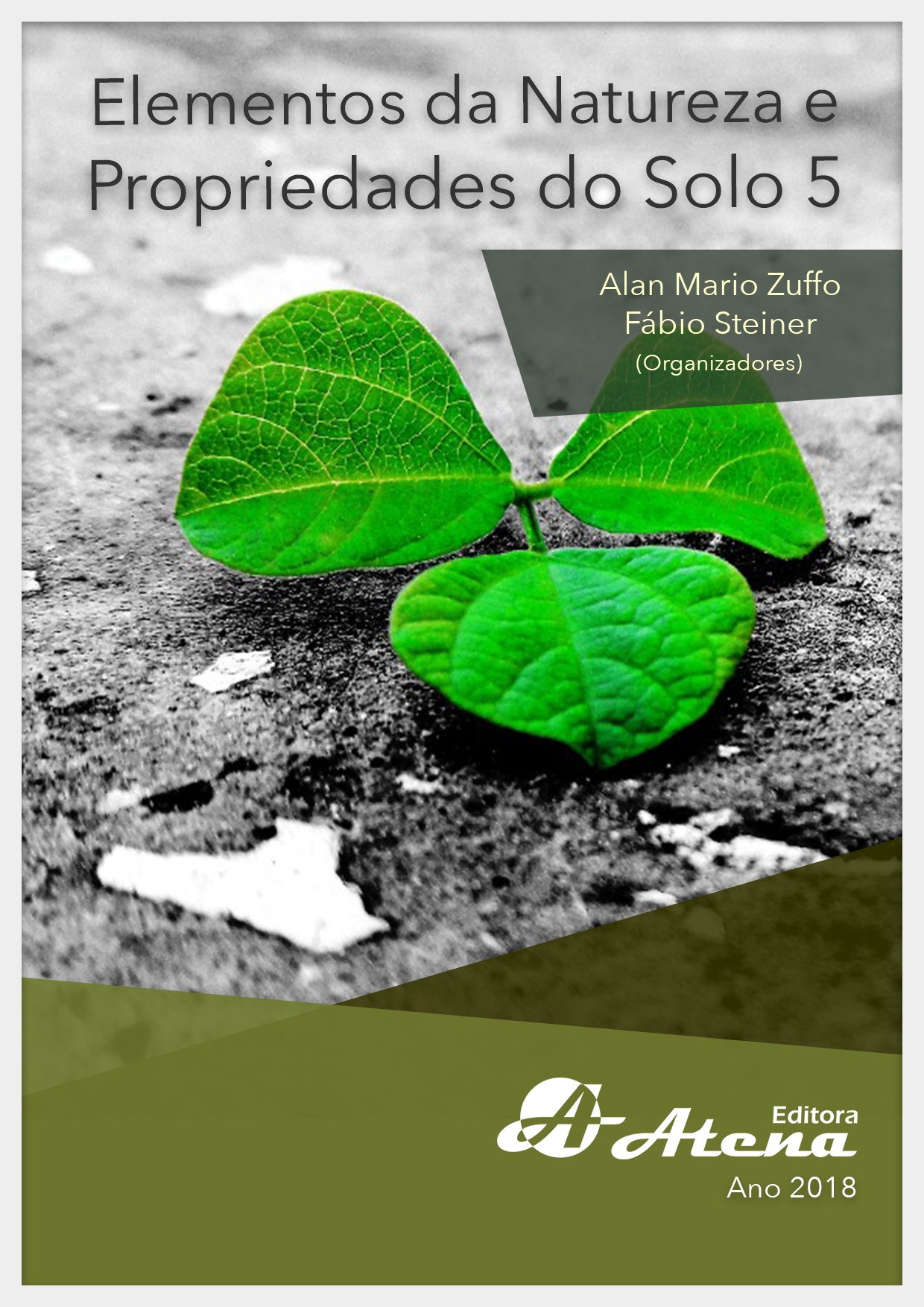
TEOR E ACÚMULO DE NUTRIENTES EM COUVE-FLOR CV. BARCELONA EM FUNÇÃO DA APLICAÇÃO DE CALCÁRIO E GESSO AGRÍCOLA
O presente trabalho teve como
objetivos avaliar em condições de campo o efeito
da calagem, realizada em diferentes formas,
e do uso de gesso agrícola sobre os teores e
acúmulo de nutrientes em plantas de couve-flor
cv. Barcelona. Foram avaliados os tratamentos: 1)
calcário aplicado à lanço na dose de 4,0 Mg.ha-1;
2) calcário aplicado nas covas de plantio, dose
de 4,0 Mg.ha-1; 3) calcário e gesso agrícola,
aplicados à lanço, nas doses de 3,0 e 1,0 Mg.ha-1,
respectivamente; 4) gesso agrícola aplicado à
lanço na dose de 1,0 Mg.ha-1; e 5) testemunha. As
plantas foram cultivadas com base no manejo da
região. Determinaram-se os teores totais de Ca,
Mg, K, P, Cu, Fe, Mn, Zn, Ni e Al em cada órgão da
planta. Tendo como base os teores encontrados
nas raízes, caules, folhas e inflorescências e na
massa seca, calcularam-se os valores acumulados
nos respectivos órgãos e na planta inteira. Apesar
da não diferença entre os tratamentos quanto
aos teores da maioria dos nutrientes avaliados,
observou-se diferenças quanto ao acúmulo de
alguns destes na planta inteira (Ca, P e Cu), na
folha (Ca), na inflorescência (Ca, Mg e P) e no caule
(Mg). De forma geral, observou-se que a dinâmica
de acúmulo de nutrientes foi mais influenciada
pelos tratamentos com calcário. Os dados obtidos
são importantes para visualização da partição
dos nutrientes na planta e dos requerimentos
nutricionais demonstrados pela couve-flor cv.
Barcelona.
TEOR E ACÚMULO DE NUTRIENTES EM COUVE-FLOR CV. BARCELONA EM FUNÇÃO DA APLICAÇÃO DE CALCÁRIO E GESSO AGRÍCOLA
-
DOI: Atena
-
Palavras-chave: Brassica oleracea var. botrytis; calagem; cálcio
-
Keywords: Brassica oleracea var. botrytis; liming; calcium.
-
Abstract:
The objective of the present study
was to evaluate the effect of liming, performed in
different forms, and the use of agricultural gypsum
on the contents and accumulation of nutrients in
cauliflower cv. Barcelona. The treatments were: 1)
broadcast limestone at the dose of 4.0 Mg.ha-1; 2)
limestone in the furrows at a dose of 4.0 Mg.ha-1; broadcast limestone and agricultural gypsum, at the doses of 3.0 and 1.0 Mg.ha-1,
respectively; 4) broadcast gypsum at a dose of 1.0 Mg.ha-1; and 5) control. The plants were
cultivated based on the management of the region. The total contents of Ca, Mg, K, P, Cu,
Fe, Mn, Zn, Ni and Al were determined in each organ of the plant. Based on the levels found
in roots, stems, leaves and inflorescences and in the dry mass, the values accumulated in
the respective organs and in the whole plant were calculated. In spite of the non-difference
between the treatments in the nutrient content of the majority of the evaluated nutrients,
there were differences in the accumulation of some of these in the whole plant (Ca, P and
Cu), leaf (Ca), inflorescence (Ca, Mg and P) and on the stem (Mg). In general, it was observed
that the dynamics of nutrient accumulation was more influenced by limestone treatments.
The data obtained are important for the visualization of the nutrient partitioning in the plant
and of the nutritional requirements demonstrated by the cava-flor cv. Barcelona.
-
Número de páginas: 15
- Carlos Antônio dos Santos


